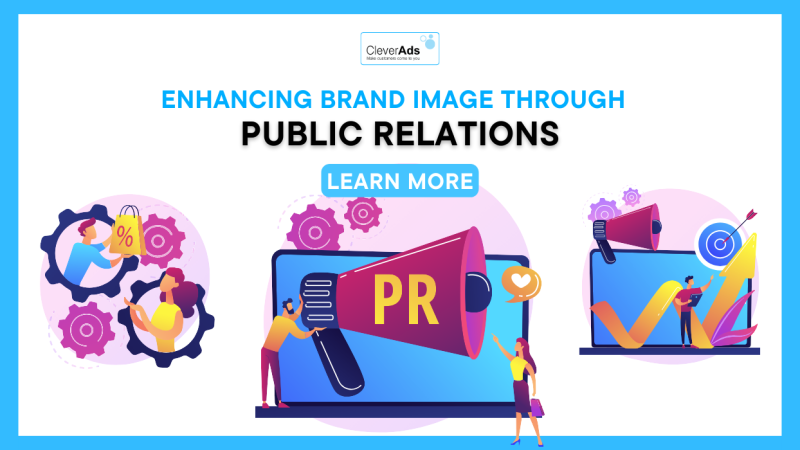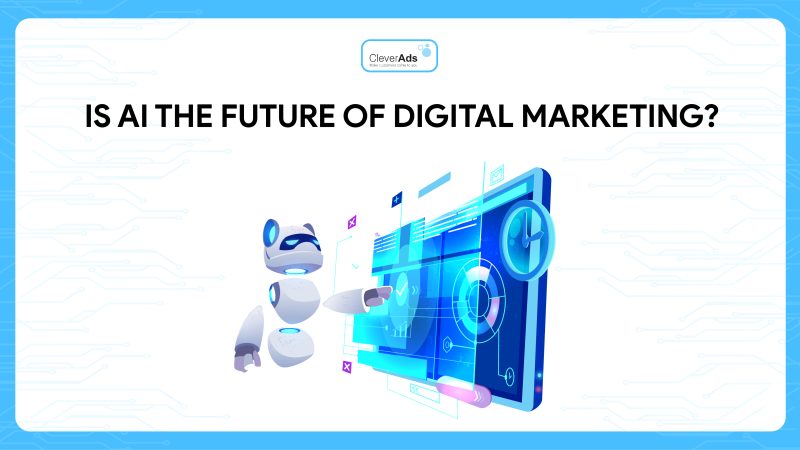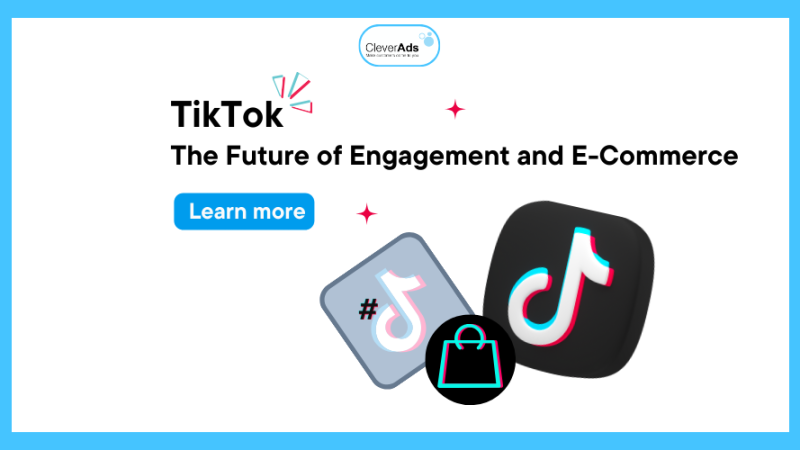An overview of applying Digital Marketing for every business
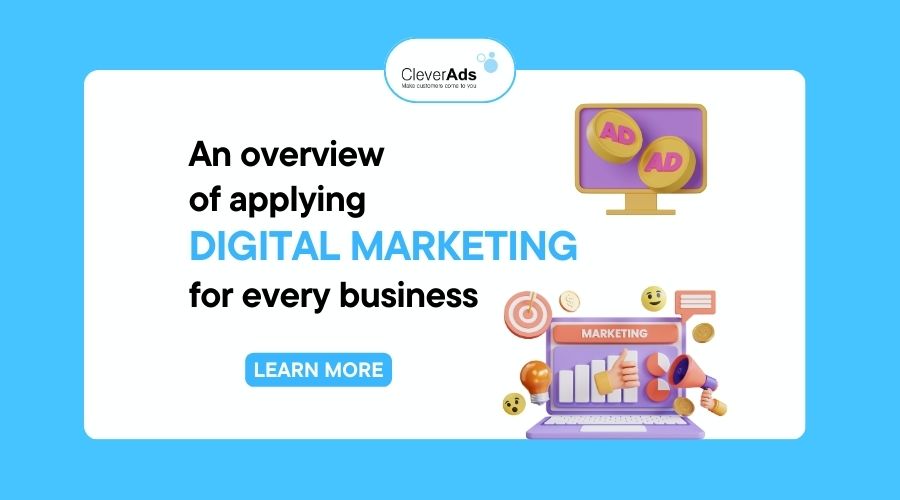
What is Digital Marketing? What are the right Digital Marketing strategies and tactics for your business? How to set a budget and measure the effectiveness of Digital Marketing activities? Find out with CleverAds in the article below.
1. What is Digital Marketing?
According to Kotler and Armstrong (2009), Digital Marketing is a form of direct marketing that connects brands with consumers through interactive technologies such as email, websites, online platforms, and phones.
According to the book Digital Marketing – Strategy, implementation and practice, Digital Marketing is applying digital technology and communication to achieve marketing goals.
Marketing objectives include
- Profit target
- The target for market share
- Promotion goal
- Growth goals
2. Overview of Digital Marketing
2.1. Media classification
Media is divided into three categories: Paid, Owned, and Earned Media.
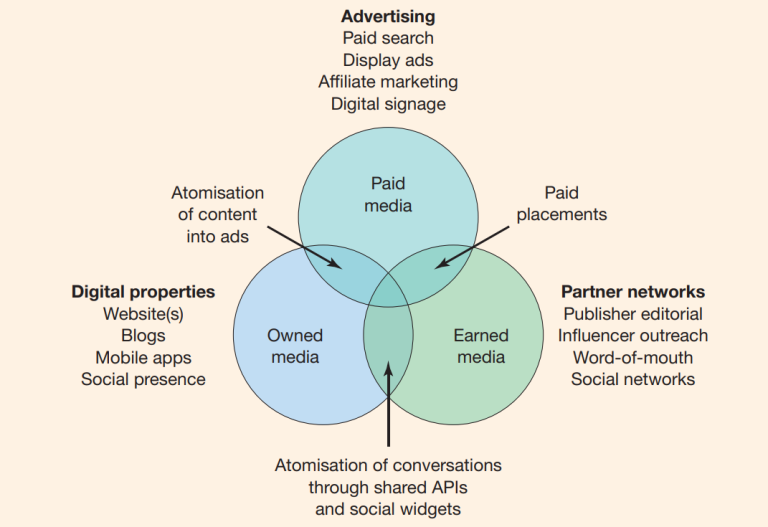
Paid media:
Paid media for views, reach, and conversions through search, display advertising, or affiliate marketing.
Owned media:
The brand owns the media. The medium includes the company’s website, blog, email, mobile application, and social networking sites such as Facebook, LinkedIn, etc.
Earned media:
The media presence comes from the brand’s public relations activities. This can come from influencers or customers, the public discussing the brand on social networks, blogs, communities, etc.
2.2. Digital media platforms
Platforms on computers and laptops:
- Computer browser: Google Chrome, Coc Coc
- Computer applications: Microsoft Office
- Email: Gmail, Outlook
- Feed-based platform and application interface: Facebook feed, Twitter feed, etc.
- Videos: Youtube, TikTok
Platforms on phones and tablets:
- Phone browser: Safari, Samsung browser
- Mobile apps: Evernote, Notion, etc.
Platforms in hardware
- Games: PlayStation, Nintendo, Xbox
- Kiosk applications: ATMs, interactive signage in commercial centers, etc.
- Wearable innovative gadget items: Apple smartwatches, Google smart glasses, etc.
3. What are the benefits and challenges of Digital Marketing?
3.1. What are the benefits of Digital Marketing?
Benefits Digital Marketing brings to businesses in terms of revenue, cost, brand, and customer relationship:
- Identify customer needs and wants.
- Anticipating customer needs, thereby controlling and adjusting resources accordingly.
- Satisfy customers through electronic channels.
- Increase sales by distributing wider.
- Bring added value to customers, such as announcements, dialogues, and feedback.
- Bring brands closer to customers through two-way conversations.
- Save on communication, research, and distribution costs.
3.2. What is the challenge of Digital Marketing?
Some of the marketing challenges that need to be improved to achieve optimal results from Digital Marketing:
- The responsibility of online marketing activities is not clear
- Not specifying marketing goals
- Not enough budget
- Waste of budget on testing activities that have not reached breakeven point
- Do not evaluate online opportunities, do not create differentiated values, and treat online channels as another normal marketing channel.
- There is no specific plan, only a trial-and-error approach
- Lack of coordination between online and offline channels
4. Digital Marketing Environment
4.1. Microenvironment and issues to be aware of
| Microenvironment Problem | Vấn đề |
| Internal company | Strategic Plan
Communication and Promotional Engineering Resources and capabilities Service availability Relationships with suppliers and intermediaries Efficiency |
| Customers | Customers’ Ability, level of access to digital platforms
Searching behavior, using products, services, sources of influence, characteristics Service expectations, satisfaction, and support |
| Suppliers and intermediaries
|
Technology adoption abilityCombination
Service availability Commercial relationships |
| Competitors | Strategic plan
Communication and Promotional Engineering Resources and capabilities Service availability Relationships with suppliers and intermediaries Efficiency |
4.2. Macro Environment (PEST)
- Political forces:
Governments and international organizations are essential in receiving and controlling the Internet.
- Economic forces:
Economic conditions affect trading opportunities, customer payment behavior, and enterprises’ business results, thereby affecting Digital Marketing’s planning.
- Social forces:
Cultural diversity among digital communities affects how businesses use the Internet, and the services companies provide online.
- Technological forces:
Technological changes affect marketing opportunities, create new products, and offer new ways to reach target markets.
5. Customer Journey in Digital Marketing
The customer buying journey in Digital Marketing is divided into two main stages: Pre-purchase and Post-purchase.
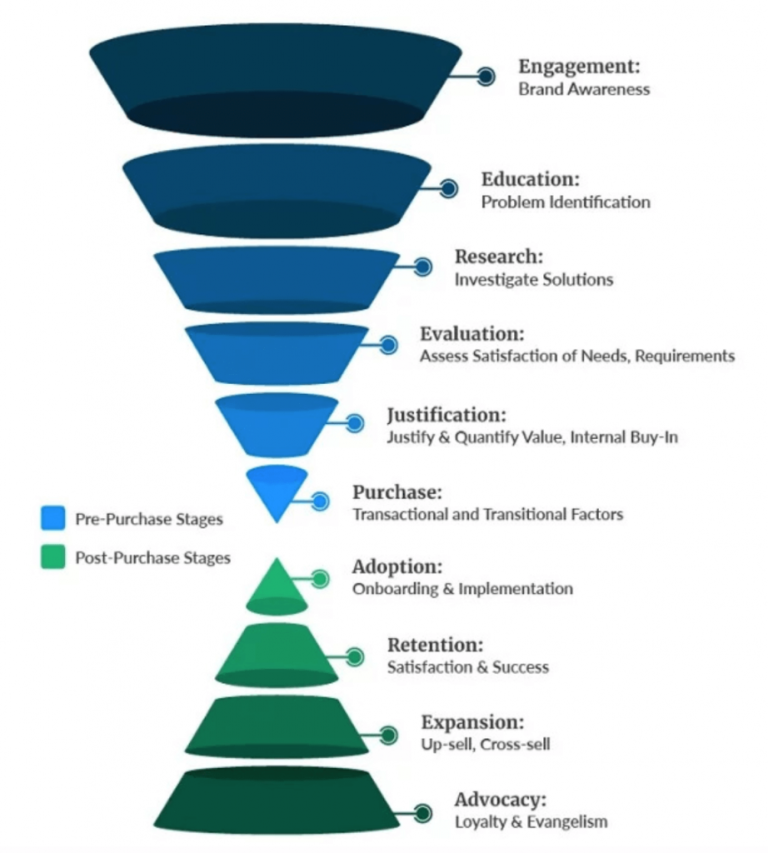
What’s unique about the digital customer journey is that it’s not linear and ends right after the customer purchases. Still, repeats can start at any point, even after the customer has purchased. And use the product.
6. What are Digital Marketing Strategies?
| Types of Strategy | Examples |
| New value proposition strategy (product and price) | • Banking – introduce new products with different quotes
• Publisher – introduce price comparison service |
| Strategies to attract customers or inbound marketing | • Content marketing
• Search engine optimization (SEO) • Pay Per Click (PPC) • Affiliate marketing |
| Customer acquisition strategy and customer experience | • Secure online store/checkout implementation
• Introduce customer reviews and ratings • Provide suitable promotions • Interactive tools to help with product selection • Buyer’s Guide |
| Customer development and growth strategies | • Personalize existing customer service and recommendations
• Email contact strategy focusing on the customer journey and level of brand awareness • Communities, social networks, blogs or to encourage advocacy and repeat purchases |
| Social media, content marketing or business initiatives that benefit society | • Social Listening
• Content page development • Encourage evaluation • Reach out to influencers • Community |
| Enhance marketing capabilities through improved site infrastructure | • CRM or personalization
• Content management system • Performance improvements – improved information management, web analytics systems, including systems for multivariate testing and AB testing • Improved customer feedback tool |
| Resource strategy and governance | • Process change
• Skills development • Team structure |
7. What are Digital Marketing Tools?
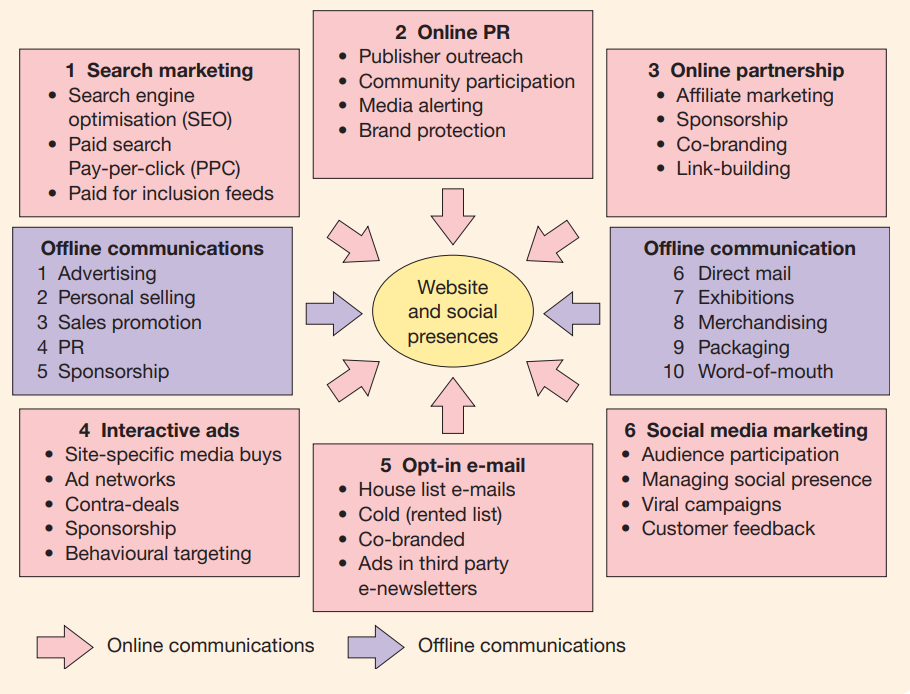
Search Marketing
- Search engine optimization (SEO)
- Paid Search
- Pay Per Click (PPC)
Online public relations
- News
- Join the community
- Change media
- Trademark Protection
Online partner
- Affiliate Marketing (Affiliate Marketing)
- Sponsor
- Co-branding
- Link-building
Offline communication
- Advertisement
- Personal sales
- Sales promotion
- Public Relations
- Sponsor
- Letters
- Exhibition
- Packaging
- Word of mouth (WOM)
- Interactive advertising
Advertise on specific websites
- Ad network
- Contra-deals
- Sponsor
- Targeting behavior
- Brand email list
- Rent an email list
- Brand cooperation
- Ads in third-party emails
Social media marketing
- Audience participation
- Managing your social media presence
- Online campaign
- Feedback from customers
8. Budget setting and digital media selection
Budgeting methods are suggested by Kotler et al. (2001):
- The “affordability” method calculates the marketing budget by subtracting expected revenue from expenses.
- The “percentage of sales” method: the marketing budget is calculated as a percentage of projected sales.
- The “competitive parity” method: marketing budgets are set based on competitors.
- The “goal and task” method: the marketing budget is calculated by calculating the costs of the tasks that must be done to achieve the marketing goal.
Digital marketing campaign plans require three important decisions about online advertising investment or online media mix. That is:
- The level of investment in digital media.
- Incorporate investments in digital communication channels or electronic communication tools.
- The story of investment in digital assets.
9. Measure and evaluate the effectiveness of Digital Marketing
- Search traffic: including clicks, sessions, and users
- Quality: conversion rate, bounce rate
- Media cost: cost per click (CPC) and cost per thousand visits (CPM)
- Cost of customer acquisition or cost per action (CPA): cost per visitor, lead, business deal
- Return on Investment (ROI)
- Brand value scales: brand awareness, ad recall rate, brand familiarity, brand preference, and purchase intention.
- Lifetime value: a customer’s lifetime value compared to the cost of attracting and retaining them and other fees.

In addition to understanding Digital Marketing in general, to successfully apply it to their businesses, marketers must research specifically the industry they are doing.
CleverAds – the most trusted Digital Marketing destination
After reading the article, marketers must have understood what Digital Marketing is and briefly about how to apply Digital Marketing to businesses.
However, from theory to practice is a long distance. Only some businesses have a marketing department with enough professional human resources to deploy the most complete and effective Digital Marketing campaign. In such cases, outsourcing a Digital Marketing agency is a wise choice for the business.
CleverAds pioneers new-generation advertising services and technologies in Vietnam & Southeast Asia. We have been giving customers a Stop Digital experience with a diverse service system, comprehensive and comprehensive solutions on a digital platform. With five offices in 3 countries, CleverAds has successfully implemented advertising campaigns for more than 20,000 customers in many industries at home and abroad.
